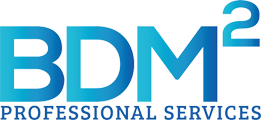For over two decades, I’ve guided complex projects, from multi-million-dollar infrastructure undertakings to enterprise-level system rollouts, ensuring seamless governance and oversight. But in the past 10 years I’ve truly realized the transformative power of robust project finance support. Today, this critical offering is at the heart of our 360 Project Suite, enabling clients to deliver with confidence, clarity, and control.
Why Structured Project Finance Matters
According to Productive.io, effective project financial oversight is the disciplined practice of “planning, organizing, controlling, and monitoring financial resources to meet objectives and deliver value”. Yet far too often, projects struggle not from poor execution, but from neglected financial discipline.
Left unmanaged, budgets morph into blind budgets. A study in Saviom reported that 27% of projects run over budget due to underestimation and poor cash flow forecasting . In larger capital programs, cost overruns average an alarming 16.5%, with delays compounding risks.
In the last decade, I’ve watched this pattern repeat, with misallocated resources, vendor payment disputes, and hopelessly dated forecasts derailing even the best-laid project plans. That’s why we’ve embedded budgeting, forecasting, cost variance analysis, invoice review, accrual tracking, and financial reporting into our project back office support, the 360 Project Suite.
Establishing Cost Baselines: Laying the Groundwork for Accuracy
Everything starts with a well-defined cost baseline:
- Detailed line-item budgets
- Bottom-up estimates, bolstered with risk-adjusted contingency
- Alignment with the project timeline to provide a true cost phasing
Creating that baseline delivers a measurable metric for variance: you need a yardstick before you can detect deviation. It’s critical for the next step: ongoing budget tracking.
We also leverage past trend analysis to strengthen our baselines. By reviewing actual cost data from completed projects or phases, we identify historical cost behaviors, allowing for better alignment between future forecasts and real-world spending.
Real‑Time Budget Tracking & Forecasting: Stay Ahead of the Curve
A static budget is almost useless. Real value lies in frequent, dynamic tracking and forecasting.
Mastt defines variance reporting as essential to monitoring project spending and mitigating future risk (Triskell Software, Wikipedia, Mastt).
Through client dashboards and integrated ERP systems, our team delivers:
- Actual Cost (AC) vs Earned Value (EV) vs Planned Value (PV)
- Estimate at Completion (EAC) to anticipate final outcomes
- Cost Performance Index (CPI) and Cost Variance (CV) for proactive oversight
We complement these systems with Ad-hoc reports tailored to the questions and needs of sponsors, auditors, and executive teams. Whether it’s a snapshot of contractor performance, a forecast comparison across departments, or burn rate analysis for a critical path component, we deliver the insight needed.
In one recent project, variance flags triggered a review within hours, not weeks, saving over $200k that would have otherwise overstayed the budget.
Identifying Cost Overruns Early: Mitigate Before It’s Too Late
We’ve seen time and again that cost overruns start small, but balloon quickly. In public-sector IT projects, 18% suffer overruns greater than 25%, with delays worsening financial risk (Wikipedia, arXiv). Infrastructure projects? Average overruns of 16.5%, with longer timelines correlating strongly with higher costs .
Our system tracks CPI and CV, triggering escalation workflows:
- Budget baseline comparison
- Weekly AC-EV variance reporting
- Tiered thresholds—when triggered, we alert stakeholders
- Recommend mitigation: resource shift, scope re-evaluation, or fund reallocation
Our proactive course correction oversight, is the reason our clients consistently hit financial targets, even in complex environments.
These early warnings are backed by past trend data to contextualize whether an overage is a short-term anomaly or a signal of systemic failure.
Integrating Financial Reports with Project Status: One Unified Narrative
Too often, financial and schedule data live in separate silos, leaving stakeholders with fragmented views. As Runn notes, project financial management brings planning, budgeting, and billing together to provide clarity and impact business growth (Cube, Runn).
Our deliverables include:
- Executive dashboards showing both financial and schedule performance
- Consolidated summaries for steering committees linking dollars and deliverables
- Drill‑downs for sponsors and PMs for deep insight
The result? Reports that tell a cohesive story: “We’re on time, on cost, and here’s the evidence.”
A Look at The Facts:
- 27% of projects run over budget without financial controls (Wikipedia, SAVIOM)
- Variance reporting keeps teams proactive and financially stable (Mastt)
- Variance analysis across phases helps pinpoint inefficiencies (Mastt & GreerWalker)
- Infrastructure projects average 16.5% cost overruns; delays intensify risk (Flyvbjerg)
- 18% of public IT projects exceed budget by 25%+; long schedules heighten risk (Budzier &Flyvberg)
These insights underscore why project finance oversight plays such a huge factor in the completion of any project.
How BDM Squared Does It Differently
In my 20+ years leading governance and oversight, I’ve found processes fail when people lack transparency and tools lack agility. Here’s how we address both:
- Baseline Excellence
We build detailed cost baselines that are tied directly to your project schedule. That means time risks and financial risks are managed together, contingencies on both ends working hand-in-hand to support strategic execution.
- Tool Integration
Whether ERP, Oracle, Sage, or JIRA-linked finance tools, we automate data flow. No more manual Excel chaos.
- Proactive Monitoring
Weekly variance reports, alerts, and forecasts maintain a forward view, and we document all recommendations.
- Governance-Grade Reporting
Formal reports align financials with project metrics. Presented with clarity to leadership and stakeholders.
- Bi-Weekly Forecasting for Continuous Adaptation
Forecasts are refined bi-weekly to reflect rolling changes in scope, spend, and timing. Our weekly analysis compares actuals to forecasts, identifying areas that require corrective action.
The Client Impact
Clients consistently report:
- Reduced cost overruns, often under 5% on large-scale deliveries
- Faster, cleaner financial close-outs, with streamlined accruals and reconciliations
- Improved sponsor trust, through crisp, clear financial communication
- Operational efficiency, as integration saves an estimated 10–15 hours per PM per month
Empower Your Project Financials from the Inside Out
Your project vision deserves structured financial discipline rooted in governance, transparency, and proactivity.
With BDM Squared’s Project Finance support, you’ll:
- Set accurate baselines with intentional buffers
- Monitor spending in real time
- Surface and correct overruns before they escalate
- Deliver unified, confidence‑building reports to all stakeholders
Lets partner to give your project the financial clarity it deserves. Click here & schedule your project’s financial health check today.

